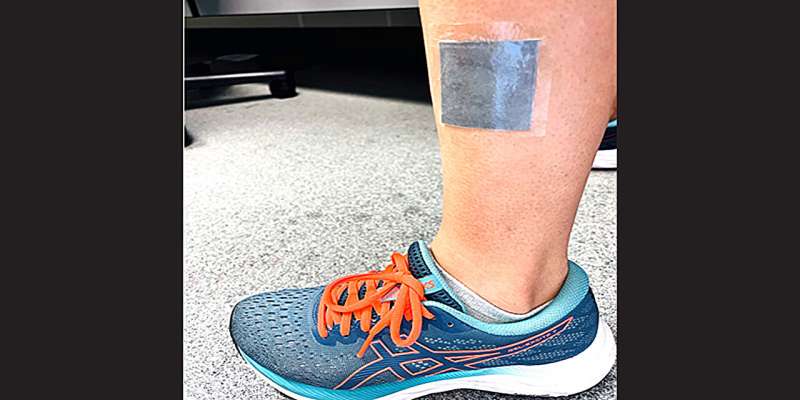This article has been reviewed according to Science X's editorial process and policies. Editors have highlighted the following attributes while ensuring the content's credibility:
fact-checked
peer-reviewed publication
trusted source
proofread
High-tech bandages could fend off infections, improve healing

When wounds happen, we want them to heal quickly and without complications, but sometimes infections and other complications prevent it. Chronic wounds are a significant health concern that affects tens of millions of Americans.
Binghamton University Professor Seokheun "Sean" Choi has some ideas about how to improve the healing process, pulling together his recent research on biodegradable papertronics and bacteria-fueled biobatteries.
In a new paper published in the journal ACS Applied Materials & Interfaces, Choi and two Ph.D. students from his Bioelectronics and Microsystems Lab—Maryam Rezaie and Zahra Rafiee—propose therapeutic dressings that inhibit dangerous biofilms by incorporating spore-forming bacteria that produce antibacterial agents as well as controlled electrical stimulation powered by biobatteries.
"We have very beneficiary skin bacteria that facilitate systematic immune defense. When you have a wound, this skin bacteria help with healing," said Choi, a faculty member at the Thomas J. Watson College of Engineering and Applied Science's Department of Electrical and Computer Engineering.
"The problem is that this environment is perfect for pathogen invasion because it's nutrient-rich, moist and warm. When they start to form a biofilm, it's really hard to eradicate those pathogens, and the wound-healing process can be extended, sometimes for a year or longer."
The Binghamton team improves on previous research on live bacterial therapeutics in several ways. The bacteria are better integrated into the dressings and stay dormant until they activate on the wound itself, allowing for long-term storage. As long as there are nutrients, they will produce an almost unlimited amount of antibacterial agents.
Improving antibacterial effectiveness even further, the team successfully added copper oxide and tin oxide nanoparticles to the spore-carrying bacteria to generate a tiny amount of power. When channeled into the wound area, the electric current seems to break down the cell integrity of the infecting microbes and stimulate healing.
The researchers tested their paper-based dressing on simulated human skin and pig skin with promising results, but more investigation is required before the process is ready for human use.
"The beauty of using paper is that it is disposable, so you don't need to worry about a second infection after you use it, but the future work is necessary," Choi said. "We don't clearly understand how this electrical stimulation heals the wound infections. One guess is that the membranes of a bacterial cells were damaged, but the type of electrical stimulation or how long in duration or how frequently to make it effective is something we need to study further."
More information: Maryam Rezaie et al, Unlocking Wearable Microbial Fuel Cells for Advanced Wound Infection Treatment, ACS Applied Materials & Interfaces (2024). DOI: 10.1021/acsami.4c06303




















